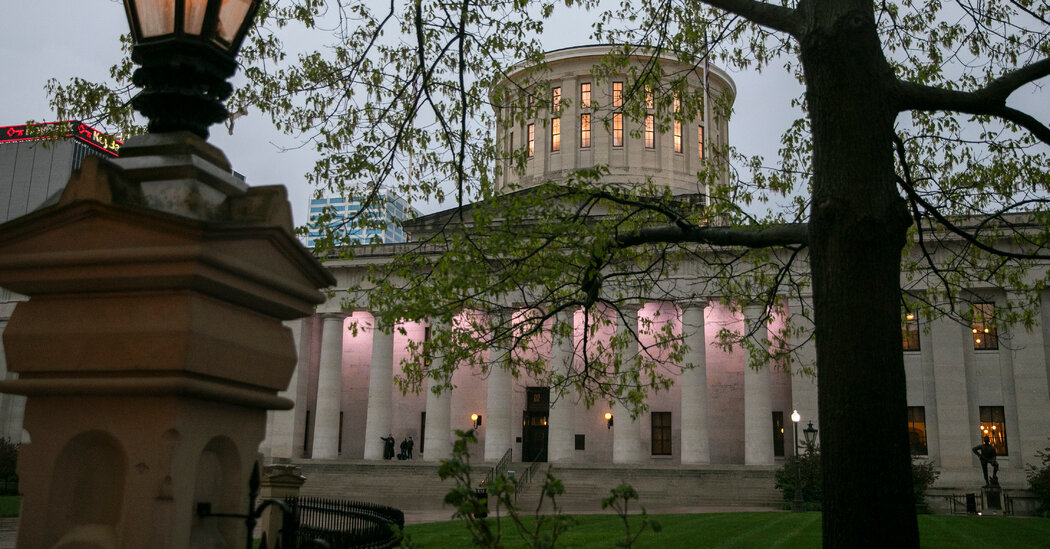Supreme Court’s Mixed Record on Overturning Precedents
It can sometimes seem that the Supreme Court is on a jurisprudential rampage that has left the legal landscape cluttered with the corpses of discarded precedents.
In just the past two terms, after all, it has done away with the constitutional right to abortion and race-conscious admissions in higher education. Judging by oral arguments this month, a foundational precedent on the power of executive agencies, Chevron v. Natural Resources Defense Council, is unlikely to survive its encounter with the justices unscathed.
But by standard political science measures, the court led by Chief Justice John G. Roberts Jr. since 2005 is not out of line with earlier courts in its treatment of precedent.
The famously liberal court led by Chief Justice Earl Warren from 1953 to 1969 overruled an average of 3.1 precedents per term. The number ticked up slightly as the court moved to the right under Chief Justice Warren E. Burger, who led the court from 1969 to 1986, to 3.4 precedents per term. It dropped under Chief Justice William H. Rehnquist, who led the court from 1986 to 2005, to 2.4 precedents per term.
Through the end of the term that ended in June, the Roberts court has overruled precedents at the lowest rate, at 1.6 per term. But it has picked up the pace since the arrival in 2017 of the first of three justices appointed by President Donald J. Trump. Since then, the rate has been 2.2 precedents per term, still the lowest of the four courts.
What distinguishes the Roberts court is ideology. In cases overruling precedents, the Warren court reached a liberal result 92 percent of the time. The Burger and Rehnquist courts reached liberal outcomes about half the time. The number dropped to 35 percent for the Roberts court. Since 2017, it has ticked down a bit, to 31 percent.
I can hear your objections. It must matter, for starters, whether the overrulings were important or trivial. Overturning Roe v. Wade is nothing like discarding cases on sovereign immunity or government takings of private property.
Political scientists measure the importance of decisions — they call it their salience — the same way some journalists do, by asking whether the decision was covered on the front page of The New York Times.
By that measure, the Warren court’s overrulings were especially salient, warranting front-page coverage 61 percent of the time. The corresponding number for the Burger court was just 28 percent. Front-page coverage of overrulings by the Rehnquist and Roberts courts were nearly identical, at 42 and 41 percent.
The earlier courts heard more cases and so had more opportunities to overrule precedents. But the percentages of decisions overruling earlier ones varied only a little, from about 3 percent in the Warren court years to about 2 percent in the later ones.
The overall data present a mixed message, said Lee Epstein, a law professor and political scientist at the University of Southern California who oversees the Supreme Court Database, from which these numbers were drawn.
“Although there are many ways to undermine unwanted precedents, the clearest is when the justices explicitly or implicitly overrule past decisions,” she said. “By that indicator, the Roberts court appears rather modest, overruling 1.6 decisions per term compared with an average of 2.9 for its predecessors going back to 1953. Then again, there’s been activist acceleration: nearly a majority of the overrulings occurred in the last six terms, and most came in high-salience cases.”
She added: “If the court discards Chevron — as is widely predicted — its decision would be in keeping with these trends.”
Barry Friedman, a law professor at New York University and the author of a 2010 article on “stealth overruling,” said such data have limitations in assessing the court’s commitment to the principle of stare decisis, legal Latin for “to stand by things decided.”
“You can’t look at historical figures about stare decisis and know anything,” he said, “because sometimes courts and justices are honest about overruling precedent and sometimes they are not.”
There is certainly an element of judgment involved in deciding which decisions overruled others, but the Supreme Court Database on the whole makes sensible distinctions, counting not only formal overrulings in majority opinions but also clear, persuasive statements in dissents saying the majority had indeed overruled a precedent.
That is what happened in the affirmative action case, where the majority opinion did not overrule the key precedent in so many words.
But a concurring opinion from Justice Clarence Thomas and a dissenting one from Justice Sonia Sotomayor both made clear that the precedent had been overruled.
The database also counts as an overruling the occasional curious statement in a Supreme Court opinion that a precedent had already been effectively overruled at some time in the past. That happened in 2022, when the court sided with a high school football coach who wanted to pray on the field after games.
In the process, Justice Neil M. Gorsuch said the court had at some point abandoned a major precedent on the First Amendment’s establishment clause, Lemon v. Kurtzman.
Chief Justice Roberts made a similar point this month at the arguments challenging Chevron, saying that the court had already stopped relying on it. Indeed, after invoking it to decide cases at least 70 times, the court has not done so since 2016.
In a Supreme Court brief in the case, Paul D. Clement, who had also argued the case involving the football coach, urged the court to acknowledge reality.
“The question is less whether this court should overrule Chevron,” he wrote, “and more whether it should let lower courts and citizens in on the news.”


